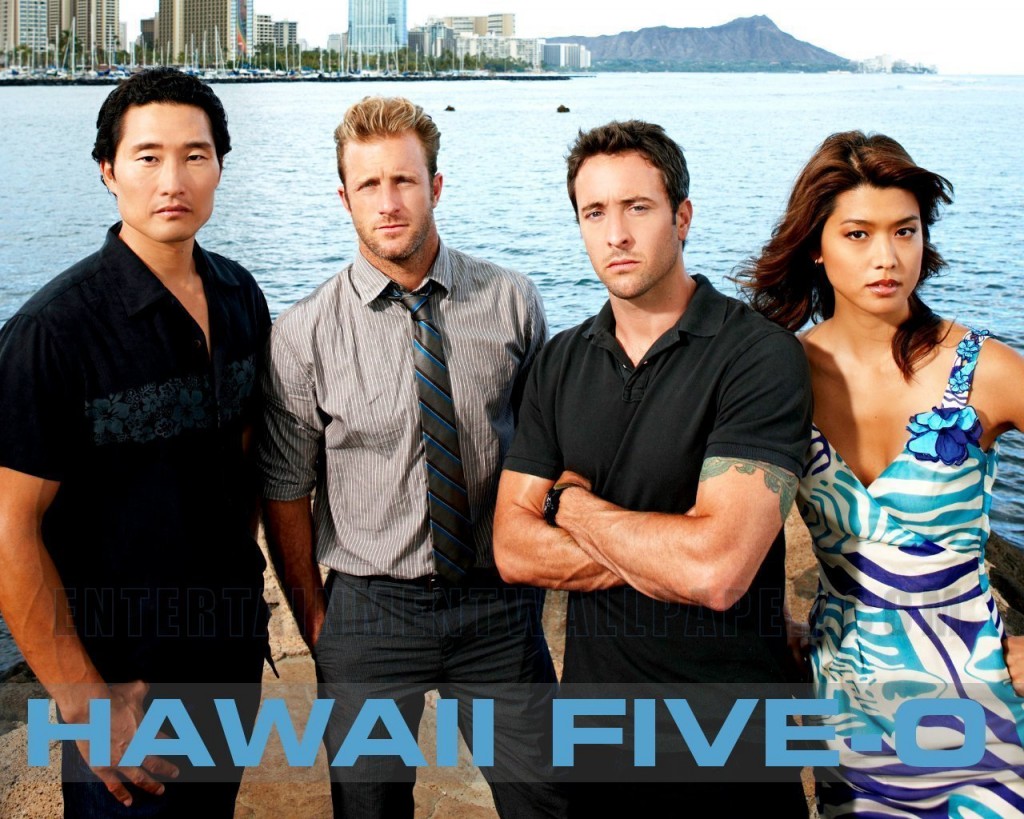10 Dec “Hawaii Five-0” airs powerful episode about Pearl Harbor & imprisonment of Japanese Americans during WWII
We’re fans of the CBS series “Hawaii Five-0” for lots of reasons, including the fact that it’s a showcase for Asian and Pacific Islander actors such as Daniel Dae Kim and Grace Park, and the entertaining “bromance” relationship between Steve McGarrett (Alex O’Loughlin) and Danny “Danno” Williams (Scott Caan).
I always loved the original series that ran from 1968-1980, and think it’s great that this reboot uses pretty much the same arrangement for the theme song, and even uses quick-cut images that evoke the look and feel of the intro sequence from the earlier Five-0.
And finally, who can’t love a show that celebrates the coolest and best-looking of all the United States, with loving b-roll shots of both its glistening city life and its incredibly beautiful natural scenery?
This week, we get a whole new reason to appreciate “Hawaii Five-0” and tune in regularly. The producers are focusing on an aspect of American history that still remains under the radar of most mainstream American pop culture: The American imprisonment of people of Japanese ancestry in the wake of Japan’s attack on Pearl Harbor.
On the U.S. mainland, the federal government rounded up Japanese community leaders and tossed them into jails the day after the attack. On Feb. 19, 1942, President Franklin Delano Roosevelt signed Executive Order 9066 which allowed the military to designate “Exclusion Zones” and remove almost 120,000 people from the West Coast and put them into nine main concentration camps scattered inland, including one camp, Amache, in Colorado. Many of these camps held over 10,000 prisoners — families who were forced to leave behind their lives and property — for up to three years. Amache was Colorado’s 10th largest city at its peak.
But few people know that at least five smaller internment camps were created in the Hawaiian islands, including Honouliuli, a camp built into a gulch on Oahu which held up to 1400 prisoners, some for the entire war.
The “Hawaii Five-0” episode that airs this Friday, Dec. 13, “Ho’onani Makuakane” (“Honor thy Father”) explores the shameful period of incarceration and how it affected Japanese American families and split previously peaceful and diverse communities.
The episode begins with a ceremony at Pearl Harbor on Dec. 7 that’s attended by Five-0’s McGarrett, who stops an elderly Japanese American from shooting a decorated veteran. The attacker is a veteran himself, and accuses the other man, who’s wheelchair-bound, of killing his father in Honouliuli when he was a guard in the camp, and stealing a family heirloom katana (samurai sword).
The Five-0 team empathizes with the Japanese American, who witnessed his father’s death, and whose older brother joined the famed 100th Battalion/442nd Regimental Combat Team and was killed in action in Italy during the war, and sets out to solve the murder and theft of the katana. The story itself is well-spun and has a couple of twists before the end.
In one surprise, Daniel Dae Kim’s character, Chin Ho Kelly, reveals that he’s Korean and part-Japanese. In the original series, the character was Chinese American.
But beyond the engaging story arc and character development, the emotional resonance of the plot is what makes this episode special. When James Saito, as the character David Toriyama, is taken by McGarrett to the Honouliuli site to jog his memory, his eyes well up with echoes of his past and he recalls playing catch with his father just before his father’s murder.
It’s a moving scene — especially since I’ve seen elderly Nisei visiting internment camps on pilgrimages and reliving their childhoods — and the producers handle the flashbacks with great sensitivity.
When an FBI agent spits out the word “Japs” during one flashback, the racial hatred of the times immediately comes to life and our guts clench with the prejudice that’s unfortunately still familiar.
We tend to think of Hawaii as an enlightened, multicultural place where being Asian is a badge of the majority. But this episode educates us to the fact that under the pressure of fear and wartime panic, even a paradise like Hawaii can revert to binary tribal lines.
The conclusion is as satisfying — and profoundly moving — as the rest of the show. Weekly television rarely gets this powerful.
Kudos to the series’ producers for digging deeper into a largely forgotten chapter of Hawaii’s history, and not just giving us predictable pabulum from week to week.
Here’s a cool video from YouTube produced by the Star-Advertiser newspaper in Honolulu, about the recreation of the concentration camp:





